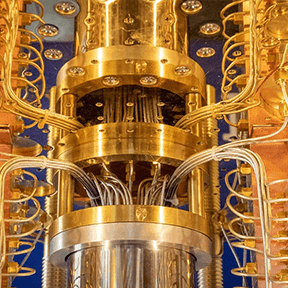Numerical evaluation of secret key rates for QKD protocols
-
Updated
Feb 4, 2025 - MATLAB

Quantum computing is a field of computing that uses quantum phenomena such as superposition and entanglement to perform operations on data. It is a rapidly growing field with potential applications in fields such as cryptography, chemistry, and optimization. Quantum computers can solve certain problems much faster than classical computers. Various programming languages such as Q#, Python and C++ can be used to write quantum algorithms to be run on quantum computers. The development of quantum computers is an active area of research and engineering.
Numerical evaluation of secret key rates for QKD protocols
Type an M x M matrix for your open quantum system Hamiltonian, and give a spectral density (analytic or numerical). FeynDyn gives the density matrix dynamics according to the Leggett-Caldeira bath or the Feynman-Vernon bath at any temperature. Can do up to 16 qubits (65536 levels) and infinitely many bath modes. Email nike@hpqc.org for the lates…
Plug-and-Play ADMM scheme based on an adaptive denoiser using the Schroedinger equation's solutions of quantum physics.
Computes the density of states in Bulk and quantum well
1D Schroedinger solver in semiconductor with non-parabolicity in Zinc-Blende
Signal and image denoising using quantum adaptive transformation.
Some MATLAB functions that may be used for exploring quantum entanglement and quantum transformations numerically.
Denoising by Quantum Interactive Patches
Simulation codes used for a final research project in Quantum Error Correction.
Quantum Phase Transition Discovery with Diffusion Maps
Single image super resolution algorithm RED+ADMM+De-QuIP
quantum simulator of control operations on qubits
De-QuIP-Despeckling (Despeckling by Quantum Interactive Patches)
Tools for measuring fidelity of a pulse sequence and numerically computing the Magnus Series terms for those sequences.
Quantifying Photon Statistics of a Pulsed LASER
Created by Richard Feynman and Yuri Manin